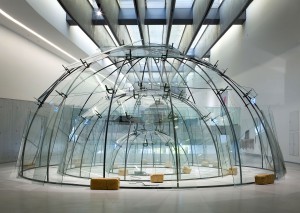Unexpected uplands in the lowlands
The Andes, the mountain range that governs the life of the Amazon Basin, lies far to the west of Brazil. The Imeri, the largest mountain range within Brazil, provides a natural border with Venezuela in the far north of the state of Amazonas. Its highest point is the sharply pointed Pico da Neblina, or Mist Peak, which at over 3,000 m (10,000 feet) is Brazil’s tallest mountain. As its name suggests, it is often shrouded in clouds, making it a perilously slippery mountain to climb. Not far away, the Pico 31 de Março is almost 2,900 m (9,500 feet) high. And in the same region, the Pico Guimarães Rosa, named after a renowned Brazilian writer, stands 2,105 m (7,000 feet) above sea-level. What is striking about these mountains is the rainforest that carpets their lower slopes, with vegetation gradually thinning out until it is halted by sheer rock.
To the east in the state of Roraima, Mount Roraima, which belongs to the Paracaima mountain range, is dramatically different geological formation. Rising to 2,800 m (9,000 feet), this table-top mountain standing on the border with Guyana and Venezuela belongs to a category called tepuis, home to endemic plant and animal species.
The Serra do Aracá State Park protects a mountain range of exceptional beauty. Located about 400 km (250 miles) northwest of Manaus, its rugged structure is again largely made up of tepuis and, while rising to only a maximum of 1,700 m (5,600 feet), it stands out dramatically against the jungle. It is also here that Brazil’s highest waterfalls are found, Eldorado and Desabamento, with water plunging 360 m (1,180 feet) against a bare mountain façade.
photo: Monte Roraima. Stato del Roraima, Brasile, 2018 © Sebastião Salgado/Contrasto.












































































For six years Sebastião Salgado travelled in the Brazilian Amazon, photographing the forest, the rivers, the mountains and the people who live there.
This exhibition, premiering in Italy with more than 200 photographs, plunges us into the Amazon rainforest, uniting Salgado’s impressive images with the sounds of the jungle. The rustling of trees, the cries of animals, birdsongs or the roar of water pumbling down from mountain tops, having turned into a magical soundscape, by the composer Jean-Michel Jarre.
The exhibition highlights this ecosystem’s fragility, showing how in protected areas, where indigenous communities, ancestral guardians of the environment, lives in territories where the forest has suffered almost no damage. Salgado invites us to see, listen and reflect on the ecological situation and how people are addressing the crisis today.
header: Yanomami shaman talking to the spirits before climbing Mount Pico da Neblina. Amazonas State, Brazil, 2014.
sezioni di mostra
The Amazon seen from above
Watering the entire continent
When it rains in the rainforest
Unexpected uplands in the lowlands
A source of fear and inspiration
Islands in the stream